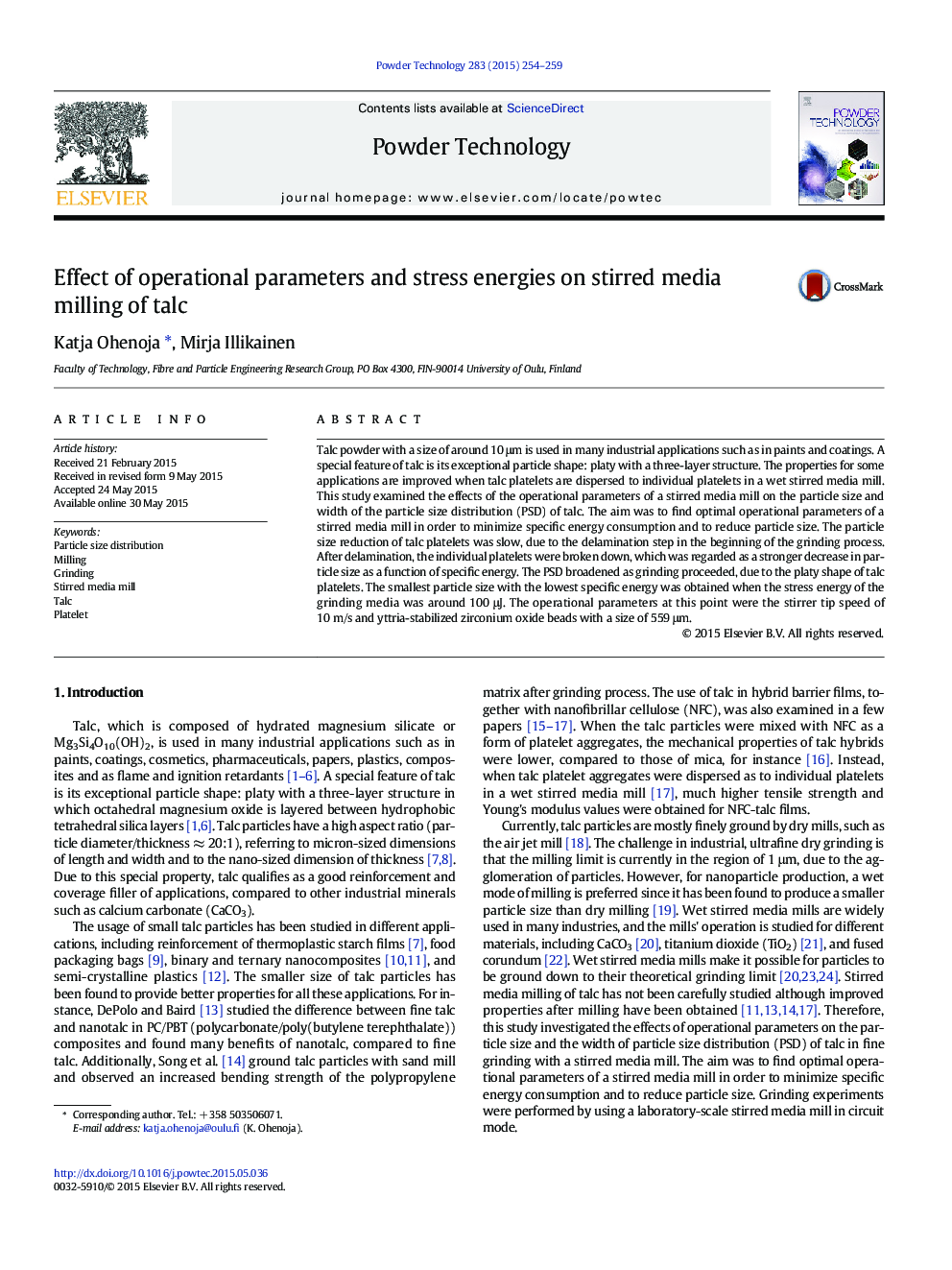| Article ID | Journal | Published Year | Pages | File Type |
|---|---|---|---|---|
| 235412 | Powder Technology | 2015 | 6 Pages |
•Stirred media milling experiments for talc platelets•Delamination first, then breaking down of individual platelets•Determined the optimal operational parameters of the mill•Smallest particle size with lowest specific energy
Talc powder with a size of around 10 μm is used in many industrial applications such as in paints and coatings. A special feature of talc is its exceptional particle shape: platy with a three-layer structure. The properties for some applications are improved when talc platelets are dispersed to individual platelets in a wet stirred media mill. This study examined the effects of the operational parameters of a stirred media mill on the particle size and width of the particle size distribution (PSD) of talc. The aim was to find optimal operational parameters of a stirred media mill in order to minimize specific energy consumption and to reduce particle size. The particle size reduction of talc platelets was slow, due to the delamination step in the beginning of the grinding process. After delamination, the individual platelets were broken down, which was regarded as a stronger decrease in particle size as a function of specific energy. The PSD broadened as grinding proceeded, due to the platy shape of talc platelets. The smallest particle size with the lowest specific energy was obtained when the stress energy of the grinding media was around 100 μJ. The operational parameters at this point were the stirrer tip speed of 10 m/s and yttria-stabilized zirconium oxide beads with a size of 559 μm.
Graphical abstractFigure optionsDownload full-size imageDownload as PowerPoint slide
